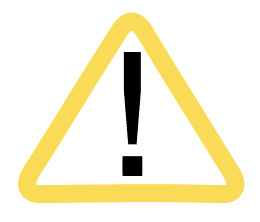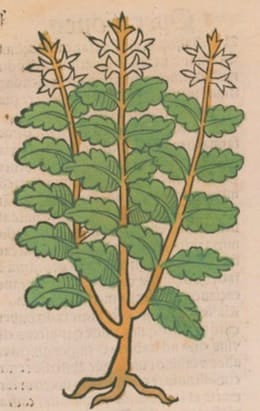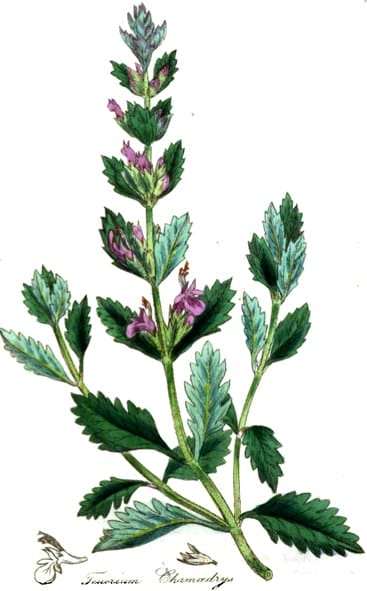Chamedrys, GermanderTrixago minorKamazarius (Unani) Kamadrius (Avicenna) |

|

|
 Ortus Sanitatis, Meydenbach, 1491
Ortus Sanitatis, Meydenbach, 1491 Medical Botany, Woodville, 1810
Medical Botany, Woodville, 1810Botanical name:
Teucrium chamaedrys (Chamaedrys officinalis)
There were several types of Germander used similarly including:
- Large-leaved Germander
- Jagged-leaved Germander
- Thorny Germander
- Mountain Germander
- Rocky Germander.
Parts used:
Leaf; Flower
Temperature & Taste:
Warm, dry. Bitter.
“Hot and dry in the third degree. Its warming potency is stronger than its drying potency.” (Avicenna)
Classifications:
2A APERIENT MEDICINES. 2C INCIDERS. 2G. CLEANSING. 2K. RESOLVENT
3F. LITHONTRIPTIC. 3G. EMMENAGOGUE
4f. SPLENETIC. 4g. HEPATIC. 4k. ARTHRITIC
Uses:
1. Clears Wind-Cold, Promotes Sweat, Resists Poison:
-protects against Infection during Epidemics
-Cold, Influenza, Cough
-‘good for Chronic Coughs’. (Galen)
-Tertian and Quartan Fevers
-venomous Bites: ‘most effectual against the poison of all Serpents’ (Culpeper)
-“useful in chronic Cough”. (Avicenna)
2. Stops Wind, Benefits the Head:
-Continual Headache, Epilepsy, Melancholy, Lethargy, Drowsiness and Dullness of Spirits
-“Its syrup is useful in Convulsions” (Avicenna)
3. Clears Wind-Damp, Promotes Urine, Eases Pain:
-Edema
-Strangury, Difficult or Obstructed Urine
-Special for all Arthritic complaints; Gout, Rheumatism, Sciatica etc.
4. Opens the Liver and Spleen:
-pain of the sides; abdominal cramps
-“dissolves the hardness of the Spleen. It is useful in Black Jaundice” (Avicenna)
-“Its syrup is very useful in indigestion” (Avicenna)
5. Moves the Blood:
-resolves congealed Blood and Bruising
-promotes Menstruation (Galen)
-promotes Labor (Galen, Avicenna); expels a Dead Fetus
6. Kills Worms
7. External:
-creeping Ulcers, Hemorrhoids, Itch, Scabs, and Catarrhs.
-“Its use with honey cleanses the chronic Ulcers” (Avicenna)
–‘made into an Oil and the Eyes anointed therewith, takes away their dimness and moistness’. (Culpeper)
-applied to Insect Bites
Dose
Usually only used in Compounds
Powder: 1–3 grams
Correctives:
Gum Arabic with Frankincense (Unani)
Substitutes:
1. Water Germander (Teucrium scordium)
2. Ground Pine
3. “The roots of Agrimony, Spleenwort and Beet are the substitutes for Germander” (Avicenna)
Main Combinations:
Ground Pine & Germander
1. Arthritic complaints:
i. usually used with Ground Pine
a.. add Gentian, Centaury (as in Powder for Gout of the Duke of Portland)
b. add Gentian, Rue (as in Powder Against Joint Pain)
c. add St Johns wort, Centaury, Agaric, Gentian (as in Antidote of Seven Things)
d. add Red Earth, Myrrh, Betony, Aloe, Saffron (as in Pills for Arthritis)
ii. also for Arthritic disease, with Sarsaparilla, Guaiacum, Mistletoe, Sage, Rosemary, St Johns wort (as in Wine for Arthritis)
2. Sciatica, Lumbago, with Savin, Myrrh, Black Pepper (as in Antidote Proven for Hip Pain of Nicholas)
3. Edema, Wine of Germander (Herbarium Horstianum, 1630)
4. Promote Menstruation, Germander with Pennyroyal decocted in wine (Herbarium Horstianum, 1630)
5. Scurvy, fresh herb decocted with Cochlearia (Herbarium Horstianum, 1630)
6. Pleurisy, Germander, Sassafras, Angelica (Slack’s Herba;, 1892)
7. Schirrus (Fibroid) Tumors, Germander, Mercury (herb), Marshmallow decocted and applied (Herbarium Horstianum, 1630)
Major Formulas
Wine for Arthritis
Powder Against Joint Pain
Powder for Gout of the Duke of Portland
Antidote Proven for Hip Pain (Nicholas)
Antidote of Seven Things (Paulus Aegineta)
Electuary for Arthritis
Pills for Arthritis
Cautions:
1. Potentially hepatotoxic. Do not overdose, avoid full doses, and don’t use for more than 2 weeks without a break in treatment. It has been banned in some countries.
2. Not used in Pregnancy or young children.
3. Not used in those with Liver disease.
Toxicity:
Contains hepatotoxic furanoditerpenoids which are also found in Tinospora crispa and Dioscorea bulbifera.
–Two contemporary cases of hepatitis associated with Teucrium chamaedrys L. decoction use: case reports and review of literature.
–[Acute hepatitis due to ingestion of Teucrium chamaedrys infusions].
Main Preparations used:
Distilled Water of the whole plant, Conserve of the Flowers
Pliny on Germander:
|
‘The chamaedrys is the same plant that in Latin is called ” trixago ;” some persons, however, call it “chamsedrops“, and others “teucria.” The leaves of it are the size of those of mint, but in their colour and indentations they resemble those of the oak. According to some, the leaves are serrated, and itwas these, they say, that first suggested the idea of the saw: the flower of it borders closely upon purple. This plant is gathered in rough craggy localities, when it is replete with juice; and, whether taken internally or applied topically, it is extremely efficacious for the stings of venomous serpents, diseases of the stomach, inveterate coughs, collections of phlegm in the throat, ruptures, convulsions, and pains inthesides. |
It diminishes the volume of the spleen, and acts as a diuretic and emmenagogue; for which reasons it is very useful in incipient dropsy, the usual dose being a handful of the sprigs boiled down to one third in three heminae of water. Lozenges too are made of it for the above-named purposes, by bruising it in water. In combination with honey, it heals abscesses and inveterate or sordid ulcers: a wine too is prepared from it for diseases of the chest. The juice of the leaves, mixed with oil, disperses films on the eyes; it is taken also, in vinegar, for diseases of the spleen; employed as a friction, it is of a warming nature’. (The Natural History of Pliny, trans. by Bostock and Riley, Vol. 5, 1856) |
–Exploring the Antibacterial Potential of Lamiaceae Plant Extracts: Inhibition of Bacterial Growth, Adhesion, Invasion, and Biofilm Formation and Degradation in Pseudomonas aeruginosa PAO1.
–Evaluation of antioxidant and antimicrobial activities and phenolic profile for Hyssopus officinalis, Ocimum basilicum and Teucrium chamaedrys.
–Determination of the antimicrobial and antioxidative properties and total phenolics of two “endemic” Lamiaceae species from Turkey: Ballota rotundifolia L. and Teucrium chamaedrys C. Koch.
ANTIOXIDANT:
–Antioxidant and Anti-Melanogenesis Effects of Teucrium chamaedrys L. Cell Suspension Extract and Its Main Phenylethanoid Glycoside in B16-F10 Cells.
–Identification of Flavonoids, Antioxidant and Antiproliferative Activity of Aqueous Infusions of Calendula officinalis L., Chelidonium majus L., Teucrium chamaedrys L. and Alchemilla vulgaris L.
–Evaluation of antioxidant and antimicrobial activities and phenolic profile for Hyssopus officinalis, Ocimum basilicum and Teucrium chamaedrys.
–Antioxidant efficacy of iridoid and phenylethanoid glycosides from the medicinal plant Teucrium chamaedris in cell-free systems.
–Determination of the antimicrobial and antioxidative properties and total phenolics of two “endemic” Lamiaceae species from Turkey: Ballota rotundifolia L. and Teucrium chamaedrys C. Koch.
ANTI-MELANOGENIC:
–Antioxidant and Anti-Melanogenesis Effects of Teucrium chamaedrys L. Cell Suspension Extract and Its Main Phenylethanoid Glycoside in B16-F10 Cells.
CANCER:
–Potential of Teucrium chamaedrys L. to modulate apoptosis and biotransformation in colorectal carcinoma cells.
